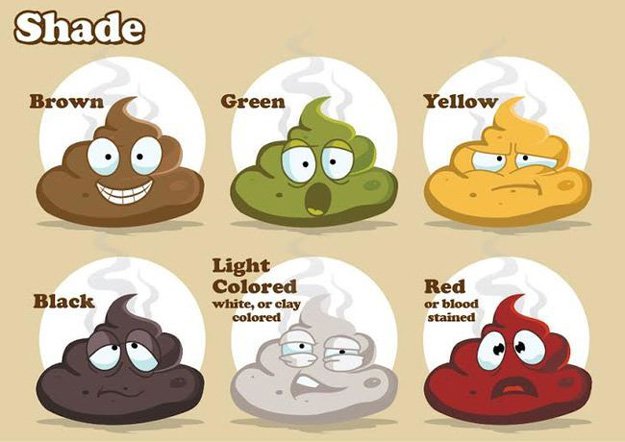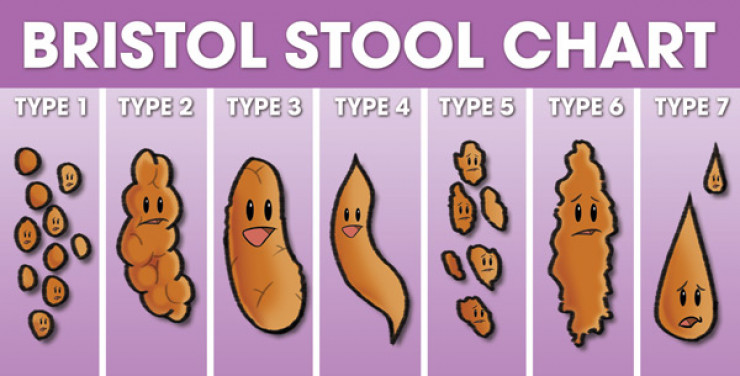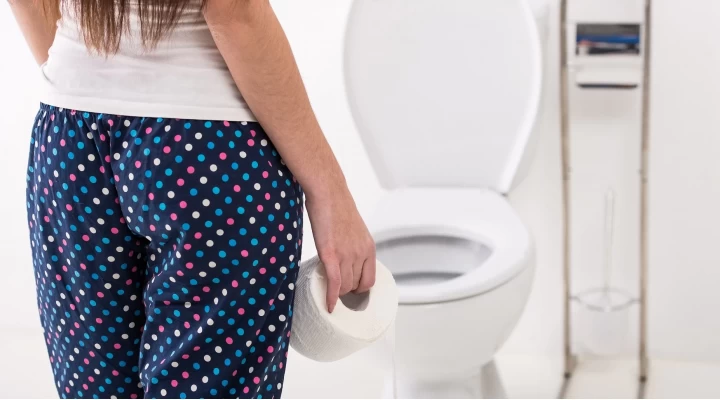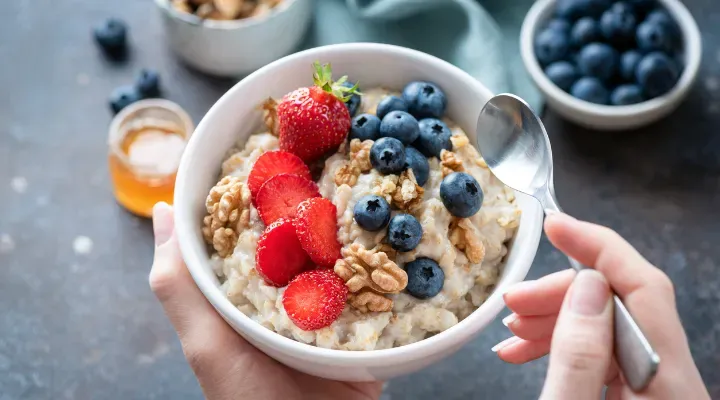How much is enough?
It’s a common mistake to think that your insides are only healthy if you do a “big one” every day. How often you go to the toilet is influenced by your diet, exercise, stress levels and many other factors. In general, we can say that defecating once to three times a day or even up to once every three days is perfectly normal. Any more or less might signify a problem.

Brown, black, yellow? What’s healthy?
Brown: normal
A healthy stool is brown in color, of a shade similar to milk chocolate due to the bile produced by the liver.
Clay-colored: endocrine pancreatic insufficiency (EPI)
A shiny, clay-colored stool indicates some kind of digestive enzyme deficiency, usually endocrine pancreatic insufficiency, otherwise known as EPI, which usually develops as the result of chronic inflammation in the pancreas. White, clay-colored stools on the other hand can also indicate an obstruction of the bile duct.
Green: diarrhea
If the feces reach the small intestine too quickly, your body doesn’t have time to break down the green-colored bile, which is why the stool is green. This occurs if you have diarrhea, though it can also be caused by eating green vegetables and food with green coloring.
Yellow: bile acid malabsorption
A yellow stool is usually a symptom of bile acid malabsorption as a result of a virus or infection.
Black: bleeding in the upper digestive tract
Bleeding in the organs of the upper digestive tracts such as the stomach and esophagus cause black-colored stools. The blood passes through the digestive system and the digestive enzymes breakdown the red blood cells, leaving the stool black in color. If this happens to you, you should make an appointment with your doctor as soon as possible.
Fresh red blood in the stool: bleeding in the lower digestive tract
Possible causes include a virus, infection, hemorrhoids or cancer, which is why you should consult a doctor immediately. Don’t be concerned, however, if in the past few days you have eaten beetroot, tomato sauce or other red-colored food or drink, as this can also affect the color of your stools.

What should my stools look like
- Sausage or snake-shaped: normal
If your poop is sausage or snake-shaped, and the surface is smooth or cracked, then we have good news: your stool is healthy.
- Lumpy: constipation
A lumpy sausage shape indicates mild constipation, while separate, hard lumps signify severe constipation.
- Soft blobs: fiber deficiency
Soft blobs with clearly defined edges indicate a fiber deficiency.
- Soft, liquid: virus
Soft pieces with ragged edges and runny stools with solid edges can indicate a stomach virus or infection.
So a healthy stool is brown, sausage or snake-shaped and passes quickly and without undue exertion from our body. If you observe that your stools are different from normal and this persists for more than a few days, or if the color of your stool is black or red – and not because of the food you have eaten – you should consult a doctor.
Image sources:
http://waytonaturelife.com/index.php/2017/01/04/heres-stool-can-tell-health-2/




